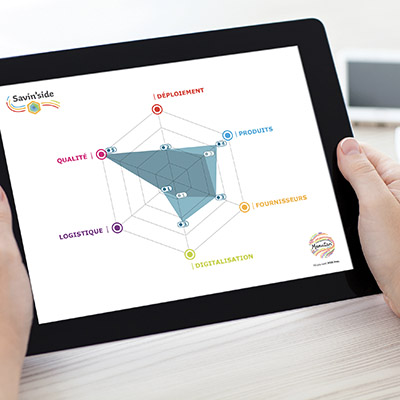In an increasingly competitive and demanding environment, companies must continuously adapt. This involves experimenting with agility to offer optimal solutions. It’s in this context that the PDCA method, also known as the Deming Wheel, has become a key tool for improving business performance. This approach, based on four main steps, allows companies to structure continuous improvement efforts and ensure sustainable results.
What is the PDCA method?
The PDCA method is a continuous performance improvement approach. It’s based on a virtuous cycle that helps companies identify issues, find solutions, then test and optimise them iteratively. The name of this method corresponds to the acronym "Plan, Do, Check, Act", representing the four key stages of this problem-solving cycle.
This concept was introduced by Walter A. Shewhart, a physicist and statistician who pioneered quality management. It was then developed by William Edwards Deming, an American researcher, in the 1950s. The latter popularised the use of this scientific method for process improvement. This concept is known by several names: Plan-Do-Check-Act cycle, Shewhart cycle, Deming Wheel (or Deming Cycle), control cycle, etc. It is now an integral part of the methods used in Lean Management.
This approach offers a framework for identifying and deploying solutions, while minimising risks by testing incremental changes on a limited scope (a product line, a process, a service…). It emphasises the importance of following a virtuous circle to sustainably solve the problems faced by the company or to innovate by developing new ideas in a structured way. It relies on short circuits, thus promoting agility.
Julie Chevalier, Managing Partner at Lean Sensei Partners, emphasises the importance of constantly questioning oneself in this approach: "The Plan-Do-Check-Act is a learning process in short and successive loops that consists of formulating a hypothesis, testing it, assessing it and drawing a lesson to update the initial hypothesis by formulating a new hypothesis, testing it and so on."
This iterative process can be applied to all sectors of activity and all functions of the organisation (procurement, logistics, marketing…). It can be used to rationalise a work process, quickly test several solutions, optimise results…
1st stage of PDCA: Planning
In the PDCA method, the first stage aims to study a problem and define the solution to remedy it. This phase can be divided into three sub-stages: Analysing the context, defining objectives and constructing the action plan.
Analysing the initial situation
The company starts by analysing the context and searching for the causes of the problem, using tools such as the Ishikawa diagram or the 5 Whys.
Setting objectives
Next, it will clearly establish "SMART" objectives, meaning Specific, Measurable, Achievable, Realistic and Time-bound.
Preparing the action plan
Based on this assessment, it must find the most suitable solution to solve its problem and devise an action plan to achieve the defined objectives. In this planning phase, it determines the resources used, the composition of the project team, each person’s mission, the key performance indicators as well as the schedule.
2nd stage of PDCA: Doing
This second stage of the PDCA cycle involves implementing the solution. Companies execute the previously defined action plan, while ensuring effective management of human, material and financial resources. This is a testing phase, an experimentation, which is done on a small scale so as not to impact the company’s operations. The idea is to learn lessons and adjust the approach.
To ensure the smooth running of this stage, it’s necessary to inform the employees concerned, but also to train them when necessary. It’s important to remember that clear and transparent communication helps to promote everyone’s compliance.
3rd stage of PDCA: Checking
This third stage of the PDCA method aims to evaluate the results obtained. The company will measure the effectiveness of the actions taken, but above all compare the results obtained with the previously set objectives. This analysis thus allows validating the solution or identifying necessary improvements. It’s particularly important to verify that the changes made have not caused any "side effects" or had any impact on other activities.
If the objectives are not achieved, it’s necessary to understand the reasons why. It’s possible that the action plan was not correctly executed, that the solution is not the right one… In this case, the company can choose to go back upstream in the process to perform a new series of tests or devise another solution, before moving on to the next phase.
4th stage of PDCA: Acting
This fourth and final stage of the PDCA approach is dedicated to the full deployment of the project. Once the experimentation is successful, the solution should be made permanent. This act phase involves defining a budget, organising processes and services, writing procedures, managing change and setting up new key performance indicators.
Of course, the approach doesn’t stop at project deployment. As you’ve understood, the Deming Wheel continues to turn, moving again to problem analysis, solution identification, action plan implementation, etc. Ultimately, this is the whole principle of continuous improvement.
The PDCA process is an ultra-effective tool for establishing a virtuous circle of continuous improvement in your organisation. By following the four steps – Plan, Do, Check, Act – companies can improve their processes, increase their efficiency and achieve sustainable results. It’s by transforming their challenges into opportunities that they can ultimately strengthen their competitiveness and resilience.









